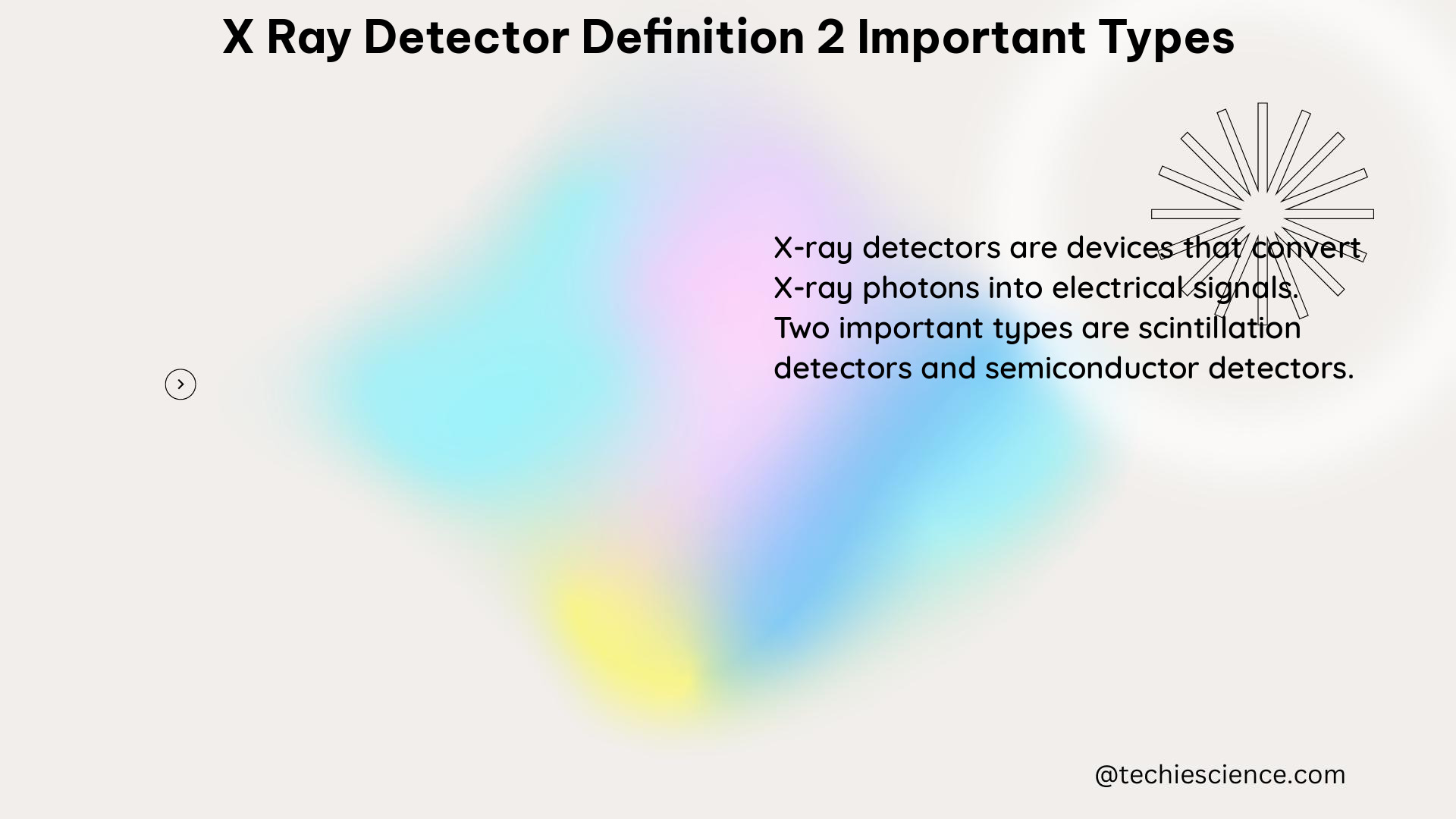X-ray detectors are devices used to measure the intensity and energy of X-rays, a type of high-energy electromagnetic radiation. These detectors play a crucial role in various scientific and medical applications, including X-ray fluorescence (XRF) spectrometry, X-ray photoelectron spectroscopy (XPS), and digital radiography. Among the numerous types of X-ray detectors, two of the most important are gas proportional counters and scintillation counters, which are commonly used in wavelength dispersive X-ray fluorescence spectrometers.
Gas Proportional Counters
Gas proportional counters are a type of X-ray detector used for quantitative analyses in XRF spectrometers. These detectors have a 25-µm beryllium (Be) window for elements ranging from aluminum (Al) to iron (Fe), and a SHT (Solid Helium Thin) window for elements from beryllium (Be) to magnesium (Mg).
The fixed channels in these detectors are used exclusively for quantitative analyses, while a scanner can be employed for qualitative analysis. The energy bandwidth of the X-ray line widths depends on the quality and optimization of the X-ray monochromator.
The working principle of gas proportional counters is based on the ionization of gas molecules by the incident X-rays. When an X-ray photon interacts with the gas, it creates a primary electron that then ionizes other gas molecules, leading to an avalanche of secondary electrons. These electrons are then collected at the anode, generating an electrical signal proportional to the energy of the incident X-ray.
The key properties of gas proportional counters include:
-
Gas Composition: The gas used in these detectors is typically a mixture of noble gases, such as argon or xenon, and a small amount of a quenching gas, such as methane or carbon dioxide. The gas composition affects the detector’s efficiency, energy resolution, and operating voltage.
-
Window Material: The window material, typically beryllium or a thin polymer film, allows the X-rays to enter the detector while maintaining the gas pressure inside.
-
Electrode Configuration: The detector consists of a central anode wire surrounded by a cylindrical cathode. The applied voltage between the anode and cathode creates an electric field that guides the ionized electrons to the anode.
-
Energy Resolution: The energy resolution of gas proportional counters is typically in the range of 0.1 to 1 keV, depending on the gas composition, pressure, and detector design.
-
Efficiency: The efficiency of gas proportional counters depends on the gas composition, pressure, and the energy of the incident X-rays. They are generally more efficient for lower-energy X-rays.
Scintillation Counters

Scintillation counters are another type of X-ray detector used in XRF spectrometers for quantitative analyses, particularly for the analysis of lighter elements such as carbon, nitrogen, and oxygen.
In a scintillation counter, the incident X-rays interact with a scintillator material, which then emits light. This light is then detected by a photomultiplier tube (PMT), which converts the light into an electrical signal.
The key properties of scintillation counters include:
-
Scintillator Material: The scintillator material is chosen based on its ability to efficiently convert X-ray energy into visible light. Common scintillator materials include sodium iodide (NaI), cesium iodide (CsI), and various organic compounds.
-
Photomultiplier Tube: The photomultiplier tube is responsible for converting the light emitted by the scintillator into an electrical signal. It consists of a photocathode, which converts the light into electrons, and a series of dynodes, which amplify the electron signal.
-
Energy Resolution: The energy resolution of scintillation counters is typically in the range of 5 to 10% of the full energy, which is lower than that of gas proportional counters. However, they are generally more efficient for higher-energy X-rays.
-
Efficiency: The efficiency of scintillation counters depends on the scintillator material, the thickness of the scintillator, and the energy of the incident X-rays. They are generally more efficient for higher-energy X-rays.
-
Linearity: Scintillation counters exhibit a linear response over a wide range of X-ray intensities, making them suitable for quantitative analyses.
In addition to these two types of X-ray detectors, X-ray photoelectron spectroscopy (XPS) is another surface-sensitive quantitative spectroscopic technique that measures the very topmost 200 atoms, or 0.01 μm, of a sample. Some key properties of XPS include:
- Analysis Area: The minimum analysis area in XPS ranges from 10 to 200 micrometres.
- X-ray Beam Size: The largest size for a monochromatic beam of X-rays in XPS is 1-5 mm, while non-monochromatic beams are 10-50 mm in diameter.
- Spatial Resolution: Spectroscopic image resolution levels of 200 nm or below have been achieved on the latest imaging XPS instruments using synchrotron radiation as the X-ray source.
In the context of X-ray detectors for digital radiography, important detector properties include field coverage, geometrical characteristics, quantum efficiency, sensitivity, spatial resolution, noise characteristics, and dynamic range. These properties determine the overall performance and image quality of the digital radiography system.
References:
– GUIDE TO XRF BASICS – FEM – Unicamp
– X-ray photoelectron spectroscopy – Wikipedia
– X-ray detectors for digital radiography – CiteSeerX

Hi, I am Sanchari Chakraborty. I have done Master’s in Electronics.
I always like to explore new inventions in the field of Electronics.
I am an eager learner, currently invested in the field of Applied Optics and Photonics. I am also an active member of SPIE (International society for optics and photonics) and OSI(Optical Society of India). My articles are aimed at bringing quality science research topics to light in a simple yet informative way. Science has been evolving since time immemorial. So, I try my bit to tap into the evolution and present it to the readers.
Let’s connect through